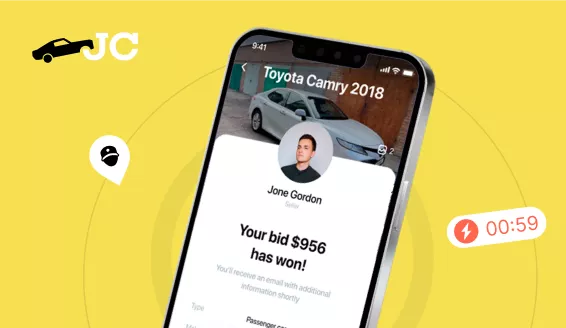How does one test a user concept quickly without racking up development costs or compromising quality? Start with an MVP.
An MVP, or Minimum Viable Product, is essentially the initial working version of a solution, offering just enough functionality to serve its main purpose.
Benefits of an MVP
A Minimum Viable Product is crucial for business development because it allows companies to:
-
Gauge user reactions and confirm the product meets their needs.
-
Assess potential profitability.
-
Refine marketing strategies.
-
Gather valuable feedback.
-
Identify and prioritize essential functionalities to reduce development costs.
-
Iterate the product based on user input.
-
Demonstrate to investors that the concept is viable and investment-worthy.
-
Start generating revenue before the product is fully developed.
-
Discontinue development to avoid spending on a non-viable concept.
Types of MVPs
-
Single-feature MVP: This version focuses on one core function the company wants to test, helping build a user base and gauge its value.
-
Wizard of Oz MVP: Named after the deceptive tactics of the wizard in the classic tale, this MVP appears functional but lacks real software automation and integrations. Users see a complete product, but behind the scenes, everything is manually operated, allowing businesses to test ideas inexpensively.
-
Concierge MVP: This type helps companies manually test concepts without code or automations. It involves direct customer interaction to assess demand and feasibility before full-scale development.
-
Frankenstein MVP: This complex product is assembled from existing solutions, allowing companies to skip development from scratch.
Creating an MVP Typically, developing an MVP involves seven stages, from idea validation to a market-ready product, though these can vary based on company, industry, and internal workflows.
-
Define the Problem: Identify the problem your product solves and the expectations of your target audience.
-
Analyze Competitors: Review their marketing strategies and operations to identify existing solutions and discover unique features to set your MVP apart from the competition.
-
Customer Persona and User Flow: Develop profiles and user flows to understand when users might need your product and the journey they’ll take.
-
Select Key Features: Focus on features that directly address user problems. Delay the development of secondary features.
-
Conduct a SWOT Analysis: Evaluate the potential and limitations of your idea, identify opportunities, and develop a strategic business approach.
-
Develop the MVP: Employ methodologies like Lean, Scrum, or Kanban to build your MVP.
-
Lean: Iterate the product based on continuous user feedback.
-
Kanban: Develop the product as new data or tasks arise.
-
Scrum: Progress in phases, evaluating and adapting after each cycle based on feedback.
-
Test the MVP: Initial testing can be done by internal teams, friends, or actual users. Use this feedback to refine the MVP and repeat the testing process until the product is ready.
Examples of MVPs
-
Uber: Started as "UberCab," a basic app allowing users to rent cars at lower rates than traditional taxis in San Francisco, available initially only to a select group of iPhone users. The service expanded its functionalities as the company grew.
-
WhatsApp: Originated to track contact statuses but evolved as users began using statuses for communication. Messaging capabilities were then integrated, gradually expanding the app’s functionality.
-
Airbnb: Launched when the founders offered air mattresses in their apartment during a fully booked conference, creating a website to advertise the temporary lodging. This "Airbedandbreakfast" tested the market, leading to significant investment and development based on the concept’s success.
Summary An MVP allows businesses to conserve resources and refine products based on real user feedback, rather than committing to full-scale development and marketing upfront. This approach allows companies to perform iterative testing and changes to their product before investing significantly in a project.
If you have a concept for a service or product but are uncertain about the development approach, contact us sales@audax.global for expert guidance.






